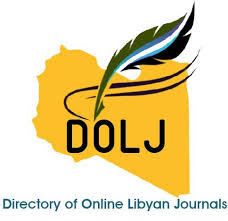Demographic and Clinical Profile of Urolithiasis Patients Undergoing Extracorporeal Shock Wave Lithotripsy: A Cross-Sectional Study at Al-Hakim Clinic, Tobruk, Libya
DOI:
https://doi.org/1054361/LJMR.19.1.11Keywords:
ureteral stone, kidney stone, shock wave lithotripsy, ESWLAbstract
Pauper:Extracorporeal shock wave lithotripsy (ESWL) is a non-invasive approach for managing urinary stones and is widely considered effective and safe, particularly for stones smaller than 20 mm. In recent years, the prevalence of urinary lithiasis has risen significantly due to dietary and lifestyle shifts, increasing by 10.6% in men and 7.1% in women. This study aims to provide a comprehensive overview of ESWL treatment for urolithiasis, examining factors such as sex, age, location, nationality, past medical and surgical history, presence of double-J stents, stone size and number, stone location, treatment sessions.
Methodology :This cross-sectional study was conducted at Al-Hakim Clinic in Tobruk, Libya, including 961 patients diagnosed with kidney stones between August and September 2024. Diagnostic confirmation was achieved through X-ray, ultrasound, and non-contrast computed tomography (NCCT) of the kidneys, ureter, and bladder (KUB). Patient records, including medical histories and demographic data, result : organized in Microsoft Excel, and analyzed using SPSS.Results Among the 961 patients, the frequency of cases from 2017 to 2024, calculated with an interquartile range (IQR), was 2019 (2018-2021).discussion: The cohort comprised 604 males (62.9%) and 356 females (37.1%), with a median age of 46 years (IQR 37-55). Most patients were from Tobruk, totaling 309 cases (32.2%). A large proportion of young adults, approximately 388 (40.4%), had stones around 1 cm in size. The right kidney was the most common stone location in both sexes, seen in 316 cases (32.9%).
Conclusion: Males are more frequently affected by urolithiasis, particularly in the right kidney, across all stone sizes. Tobruk exhibits the highest number of cases, with a significant concentration of right kidney stones, predominantly 1 cm and 2 cm in size.
Downloads
References
Tamborino F, Cicchetti R, Mascitti M, Litterio G. Pathophysiology and main molecular mechanisms of urinary stone formation and recurrence. Int J .... 2024. Cited by 13.
Kachkoul R, Touimi GB, El Mouhri G, et al. Urolithiasis: history, epidemiology, aetiologic factors and management. Malays J .... 2023. Cited by 12.
Madaminov M, Shernazarov F. Causes, symptoms, diagnosis and treatment of kidney stones (urolithiasis). Sci Innov. 2022. Cited by 13.
Pearle MS, Calhoun EA, Curhan GC. Urologic diseases in America project: urolithiasis. J Urol. 2005;173(3):848-57.
Romero V, Akpinar H, Assimos DG. Kidney stones: a global picture of prevalence, incidence, and associated risk factors. Rev Urol. 2010;12(2-3).
Worcester EM, Coe FL. Clinical practice. Calcium kidney stones. N Engl J Med. 2010;363(10):954-63.
Sas DJ, Hulsey TC, Shatat IF, Orak JK. Increasing incidence of kidney stones in children evaluated in the emergency department. J Pediatr. 2010;157(1):132-7.
Fakheri RJ, Goldfarb DS. Ambient temperature as a contributor to kidney stone formation: implications of global warming. Kidney Int. 2011;79(11):1178-85.
Taylor EN, Curhan GC. Dietary calcium from dairy and nondairy sources, and risk of symptomatic kidney stones. J Urol. 2013;190(4):1255-9.
Daudon M, Frochot V. Factors influencing urinary stone composition. J Nephrol. 2016;29(3):367-77.
Johnson CM, Wilson DM, O’Fallon WM, Malek RS, Kurland LT. Renal stone epidemiology: a 25-year study in Rochester, Minnesota. Kidney Int. 1979;16(5):624-31.
Chauhan V, Eskin B, Allegra JR, Cochrane DG. Effect of season, age, and gender on renal colic incidence. Am J Emerg Med. 2004;22(7):560-3.
Weimar JA, Elbadawi AM, Lu C, Ruggiero KE. Right vs left kidney: what’s the difference? A retrospective evaluation of differences in outcomes based on lateral kidney location. Urolithiasis. 2021;49(2):197-203.
Downloads
Published
Issue
Section
License
Copyright (c) 2025 Ghareeb .E .EKARIM, Adnan Benkhaya, Ahmedsaeid S Mikael, Alaa I Taguri (Author)

This work is licensed under a Creative Commons Attribution-NonCommercial-NoDerivatives 4.0 International License.
Open Access Policy
Libyan journal of medical Research (LJMR).is an open journal, therefore there are no fees required for downloading any publication from the journal website by authors, readers, and institution.
The journal applies the license of CC BY (a Creative Commons Attribution 4.0 International license). This license allows authors to keep ownership f the copyright of their papers. But this license permits any user to download , print out, extract, reuse, archive, and distribute the article, so long as appropriate credit is given to the authors and the source of the work.
The license ensures that the article will be available as widely as possible and that the article can be included in any scientific archive.
Editorial Policy
The publication of an article in a peer reviewed journal is an essential model for Libyan journal of medical Research (LJMR). It is necessary to agree upon standards of expected ethical behavior for all parties involved in the act of publishing: the author, the journal editorial, the peer reviewer and the publisher.
Any manuscript or substantial parts of it, submitted to the journal must not be under consideration by any other journal. In general, the manuscript should not have already been published in any journal or other citable form, although it may have been deposited on a preprint server. Authors are required to ensure that no material submitted as part of a manuscript infringes existing copyrights, or the rights of a third party.
Authorship Policy
The manuscript authorship should be limited to those who have made a significant contribution and intellectual input to the research submitted to the journal, including design, performance, interpretation of the reported study, and writing the manuscript. All those who have made significant contributions should be listed as co-authors.
Others who have participated in certain substantive aspects of the manuscript but without intellectual input should only be recognized in the acknowledgements section of the manuscript. Also, one of the authors should be selected as the corresponding author to communicate with the journal and approve the final version of the manuscript for publication in the LJMR.
Peer-review Policy
- All the manuscripts submitted to LJMR will be subjected to the double-blinded peer-review process;
- The manuscript will be reviewed by two suitable experts in the respective subject area.
- Reports of all the reviewers will be considered while deciding on acceptance/revision or rejection of a manuscript.
- Editor-In-Chief will make the final decision, based on the reviewer’s comments.
- Editor-In-Chief can ask one or more advisory board members for their suggestions upon a manuscript, before making the final decision.
- Associate editor and review editors provide administrative support to maintain the integrity of the peer-review process.
- In case, authors challenge the editor’s negative decision with suitable arguments, the manuscript can be sent to one more reviewer and the final decision will be made based upon his recommendations.














